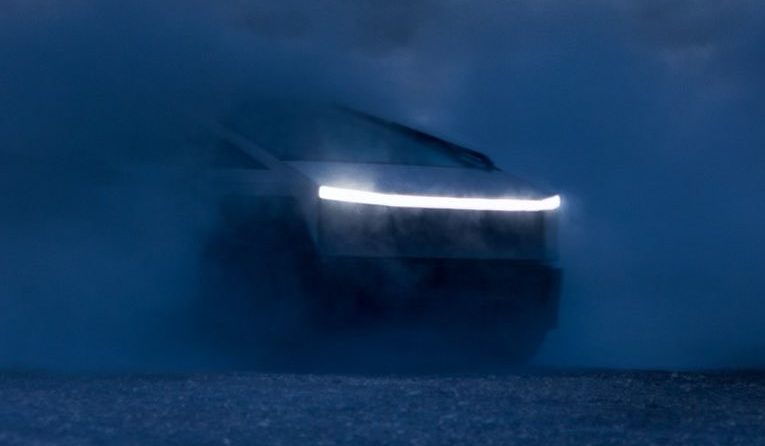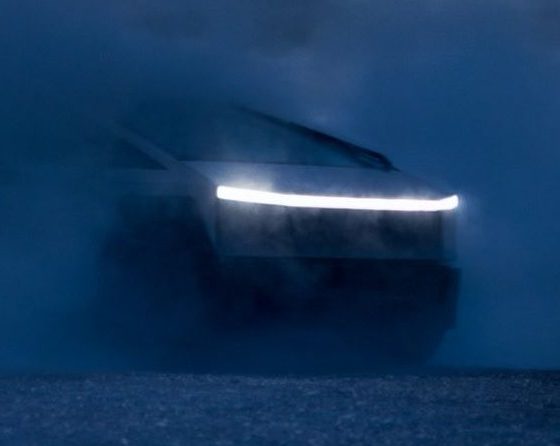The Tesla Cybertruck unveiling is just a few hours away. Social media posts indicate that attendees are now gathering in Texas. Even Tesla CEO Elon Musk, who recently made headlines after a fiery and controversial interview at The New York Times DealBook Summit, has been pretty quiet on X, the social media platform formerly known as Twitter.
Needless to say, the anticipation surrounding the Cybertruck is discernible. Quite impressively, Tesla has actually been able to keep pretty much every important detail about the Cybertruck a secret. Even the details of the vehicle’s unveiling event have been kept under wraps, with invites only including a general schedule for the occasion.
Elon Musk, however, has made it no secret that the Cybertruck’s delivery event is among Tesla’s most important. In his DealBook Summit interview, Musk went so far as to state that the Cybertruck launch would be the “biggest on Earth this year.” These statements definitely give the impression that the Cybertruck’s delivery event is an important occasion — one that could make Tesla into an event more notable company today.
Amidst all this excitement, we at Teslarati are expecting a number of highlights from the upcoming Cybertruck first delivery event. Here then are the top five things we are hoping to see in the Cybertruck launch.
Tomorrow… pic.twitter.com/TFQY4xczEo— Tesla (@Tesla) November 30, 2023
Specs and more specs
Tesla has done a stellar job of keeping the Cybertruck’s specs under wraps. Despite the large number of Cybertruck sightings over the past months, practically no leaks about the all-electric pickup truck’s key information have been shared online. In the upcoming event, Tesla will most definitely share the specifications of the Cybertruck, from its range to its performance, special features, and accessories.
Steel Ball Test 2.0
The Tesla Cybertruck unveiling became meme-worthy partly due to the failed steel ball test conducted by CEO Elon Musk and Chief Designer Franz von Holzhausen. The Cybertruck’s Armor Glass cracked when it was struck by the ball during the test, much to the shock of the audience and Musk himself. Tesla later clarified that the Cybertruck’s window was damaged by an earlier sledgehammer test, but the failed steel ball test was already immortalized in internet memes by then.
In a way, the Cybertruck’s steel ball test is unfinished business for Tesla and executives like Elon Musk. Thus, it would not be surprising if the EV maker conducts another steel ball test during the upcoming Cybertruck first delivery event. Hopefully, the test succeeds this time around.
Cybertruck Delivery Event https://t.co/rWd111HvHc— Tesla (@Tesla) November 29, 2023
Future Feature Teasers
Tesla is known for having industry-leading tech and features on its vehicles. The company is also known for announcing features that will be rolled out at a later date. This was the case with the Tesla Semi, whose Convoy Mode, which was announced in late 2017, is still yet to be released to consumers’ trucks today. Being Tesla’s newest and potentially most disruptive car to date, the Cybertruck will likely be announced with some notable features, some of which will also be released in the future.
Other Trim Details
When the Cybertruck was initially unveiled, Elon Musk noted that the all-electric pickup truck would come in three trims: a single-motor RWD version, a Dual Motor AWD variant, and a Tri-Motor AWD version. Elon Musk also hinted at a potential Quad-Motor variant later on, though details about the potential trim have been scarce. In the upcoming Cybertruck delivery event, Tesla would likely clarify the all-electric pickup truck’s final lineup, as well as each trim’s target release date.
Test Rides
Tesla held test rides with the Cybertruck when it was unveiled in late 2019. Considering that the vehicle is now ready for consumers, it would also not be surprising if Tesla offers test rides in the production Cybertruck for the first delivery event’s attendees. Test rides would likely be appreciated by the event’s attendees, as it would provide them with a firsthand experience with the all-electric pickup truck.
Don’t hesitate to contact us with news tips. Just send a message to simon@teslarati.com to give us a heads up.

Elon Musk
Elon Musk and Tesla AI Director share insights after empty driver seat Robotaxi rides
The executives’ unoccupied tests hint at the rapid progress of Tesla’s unsupervised Robotaxi efforts.

Tesla CEO Elon Musk and AI Director Ashok Elluswamy celebrated Christmas Eve by sharing personal experiences with Robotaxi vehicles that had no safety monitor or occupant in the driver’s seat. Musk described the system’s “perfect driving” around Austin, while Elluswamy posted video from the back seat, calling it “an amazing experience.”
The executives’ unoccupied tests hint at the rapid progress of Tesla’s unsupervised Robotaxi efforts.
Elon and Ashok’s firsthand Robotaxi insights
Prior to Musk and the Tesla AI Director’s posts, sightings of unmanned Teslas navigating public roads were widely shared on social media. One such vehicle was spotted in Austin, Texas, which Elon Musk acknowleged by stating that “Testing is underway with no occupants in the car.”
Based on his Christmas Eve post, Musk seemed to have tested an unmanned Tesla himself. “A Tesla with no safety monitor in the car and me sitting in the passenger seat took me all around Austin on Sunday with perfect driving,” Musk wrote in his post.
Elluswamy responded with a 2-minute video showing himself in the rear of an unmanned Tesla. The video featured the vehicle’s empty front seats, as well as its smooth handling through real-world traffic. He captioned his video with the words, “It’s an amazing experience!”
Towards Unsupervised operations
During an xAI Hackathon earlier this month, Elon Musk mentioned that Tesla owed be removing Safety Monitors from its Robotaxis in Austin in just three weeks. “Unsupervised is pretty much solved at this point. So there will be Tesla Robotaxis operating in Austin with no one in them. Not even anyone in the passenger seat in about three weeks,” he said. Musk echoed similar estimates at the 2025 Annual Shareholder Meeting and the Q3 2025 earnings call.
Considering the insights that were posted Musk and Elluswamy, it does appear that Tesla is working hard towards operating its Robotaxis with no safety monitors. This is quite impressive considering that the service was launched just earlier this year.
Elon Musk
Starlink passes 9 million active customers just weeks after hitting 8 million
The milestone highlights the accelerating growth of Starlink, which has now been adding over 20,000 new users per day.

SpaceX’s Starlink satellite internet service has continued its rapid global expansion, surpassing 9 million active customers just weeks after crossing the 8 million mark.
The milestone highlights the accelerating growth of Starlink, which has now been adding over 20,000 new users per day.
9 million customers
In a post on X, SpaceX stated that Starlink now serves over 9 million active users across 155 countries, territories, and markets. The company reached 8 million customers in early November, meaning it added roughly 1 million subscribers in under seven weeks, or about 21,275 new users on average per day.
“Starlink is connecting more than 9M active customers with high-speed internet across 155 countries, territories, and many other markets,” Starlink wrote in a post on its official X account. SpaceX President Gwynne Shotwell also celebrated the milestone on X. “A huge thank you to all of our customers and congrats to the Starlink team for such an incredible product,” she wrote.
That growth rate reflects both rising demand for broadband in underserved regions and Starlink’s expanding satellite constellation, which now includes more than 9,000 low-Earth-orbit satellites designed to deliver high-speed, low-latency internet worldwide.
Starlink’s momentum
Starlink’s momentum has been building up. SpaceX reported 4.6 million Starlink customers in December 2024, followed by 7 million by August 2025, and 8 million customers in November. Independent data also suggests Starlink usage is rising sharply, with Cloudflare reporting that global web traffic from Starlink users more than doubled in 2025, as noted in an Insider report.
Starlink’s momentum is increasingly tied to SpaceX’s broader financial outlook. Elon Musk has said the satellite network is “by far” the company’s largest revenue driver, and reports suggest SpaceX may be positioning itself for an initial public offering as soon as next year, with valuations estimated as high as $1.5 trillion. Musk has also suggested in the past that Starlink could have its own IPO in the future.
News
NVIDIA Director of Robotics: Tesla FSD v14 is the first AI to pass the “Physical Turing Test”
After testing FSD v14, Fan stated that his experience with FSD felt magical at first, but it soon started to feel like a routine.

NVIDIA Director of Robotics Jim Fan has praised Tesla’s Full Self-Driving (Supervised) v14 as the first AI to pass what he described as a “Physical Turing Test.”
After testing FSD v14, Fan stated that his experience with FSD felt magical at first, but it soon started to feel like a routine. And just like smartphones today, removing it now would “actively hurt.”
Jim Fan’s hands-on FSD v14 impressions
Fan, a leading researcher in embodied AI who is currently solving Physical AI at NVIDIA and spearheading the company’s Project GR00T initiative, noted that he actually was late to the Tesla game. He was, however, one of the first to try out FSD v14.
“I was very late to own a Tesla but among the earliest to try out FSD v14. It’s perhaps the first time I experience an AI that passes the Physical Turing Test: after a long day at work, you press a button, lay back, and couldn’t tell if a neural net or a human drove you home,” Fan wrote in a post on X.
Fan added: “Despite knowing exactly how robot learning works, I still find it magical watching the steering wheel turn by itself. First it feels surreal, next it becomes routine. Then, like the smartphone, taking it away actively hurts. This is how humanity gets rewired and glued to god-like technologies.”
The Physical Turing Test
The original Turing Test was conceived by Alan Turing in 1950, and it was aimed at determining if a machine could exhibit behavior that is equivalent to or indistinguishable from a human. By focusing on text-based conversations, the original Turing Test set a high bar for natural language processing and machine learning.
This test has been passed by today’s large language models. However, the capability to converse in a humanlike manner is a completely different challenge from performing real-world problem-solving or physical interactions. Thus, Fan introduced the Physical Turing Test, which challenges AI systems to demonstrate intelligence through physical actions.
Based on Fan’s comments, Tesla has demonstrated these intelligent physical actions with FSD v14. Elon Musk agreed with the NVIDIA executive, stating in a post on X that with FSD v14, “you can sense the sentience maturing.” Musk also praised Tesla AI, calling it the best “real-world AI” today.










